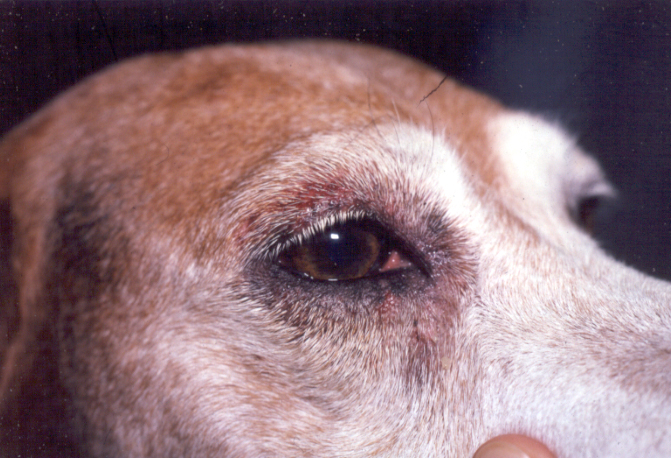You don’t need to be a veterinarian to catch the early warning signs that your pet is experiencing issues with their eyes. In fact, like almost health conditions, the golden rule is to know your pet and be mindful of behavior that seems out of character. They don’t want to play or go for a walk with as much enthusiasm as usual. Unlike humans, pets cannot tell you where or how it hurts. At least not directly. Likewise, they are unable to recognize that signaling their distress is actually what’s best for them. Instead, they’re instinctively trying to hide their weakness from potential predators as well as their own clan. One of the most common problems that causes discomfort in pets is the eyes. This is especially true for many smaller dog breeds who make for popular travel companions. Low to the ground and many with a flat-faced profile, their eyes are more exposed than most to various contaminants.
Symptoms
So, along with being mindful of unusual behavior, how can you tell if your dog has an eye infection? Typically, you’ll notice secondary symptoms.
- Redness
- Swelling
- Discharge around eyes, especially if smelly
- Squinting or holding eyes closed
- Continually blinking
- Pawing at the eye
- Light sensitivity
Types of Eye Infections
There is a long list of potential eye conditions and infections that your pet may have. We provide this list not to unduly freak you out, but rather to reassure you that most eye infections are curable. You’ll likely need to visit the vet and probably even give your pet some type of oral or topical treatment, but most of these eye conditions are curable, or at least treatable. You can read more about these common eye infections here, but this simple list will provide some context for the types of eye infections your pet may have.
- Pink Eye/Conjunctivitis
- Dry Eye
- Corneal Infection or Ulcer
- Genetic abnormality
- Allergies
- Bacterial, viral, or fungal infection
- Glaucoma
- Irritants and abrasions
- Undetected trauma
- Tear duct problems
- Tumors
- Toxins and vitamin deficiencies
Veterinary Tests for Eye Infections
There are antibiotic ophthalmic ointment treatments that work for most bacterial-based eye infections, but the treatment is different for viral and fungal infections. Plus, it’s not always apparent at first if it’s an infection at all, an allergic reaction, or other eye condition. Depending on the breed, symptoms, and circumstances, your vet may be able to make a preliminary diagnosis. Beyond the visual examination, there are a number of tests that can be run to make an affirmative diagnosis and ensure your pet is getting the best treatment possible.
- Schirmer Tear Test measures the eye’s tear production.
- A tonometer will measure intraocular pressure (IOP) and look for signs of glaucoma
- Dilating drops to examine the back of the eye, including the retina, optic nerve and tapetum, a layer of tissue that reflects light and improves night vision.
- Corneal staining to reveal ulcers or other surface breaks.
- Bacterial culture
- Allergy tests
For additional information and guidance about dog eye infections, we suggest this online resource from the American Kennel Club.




